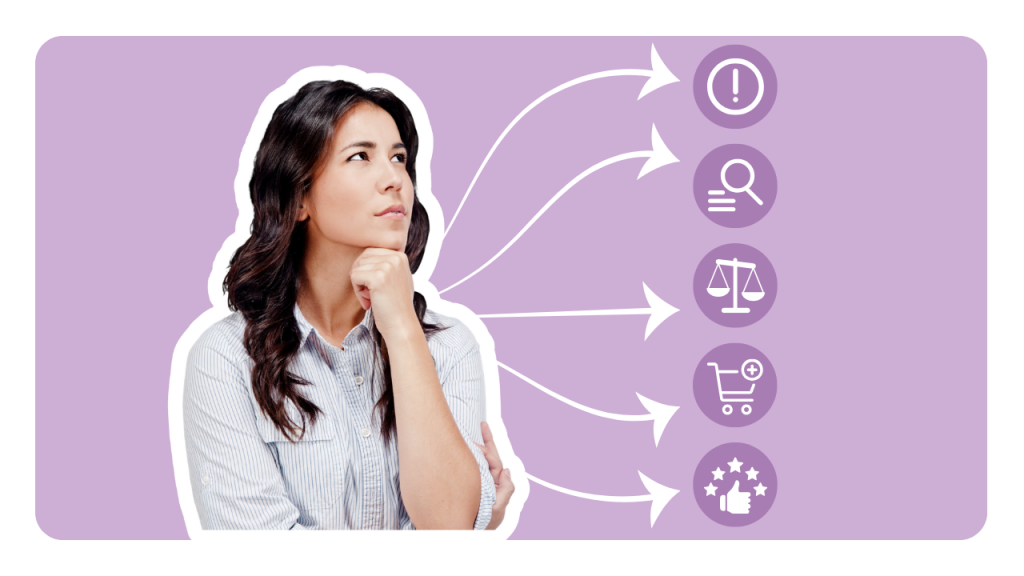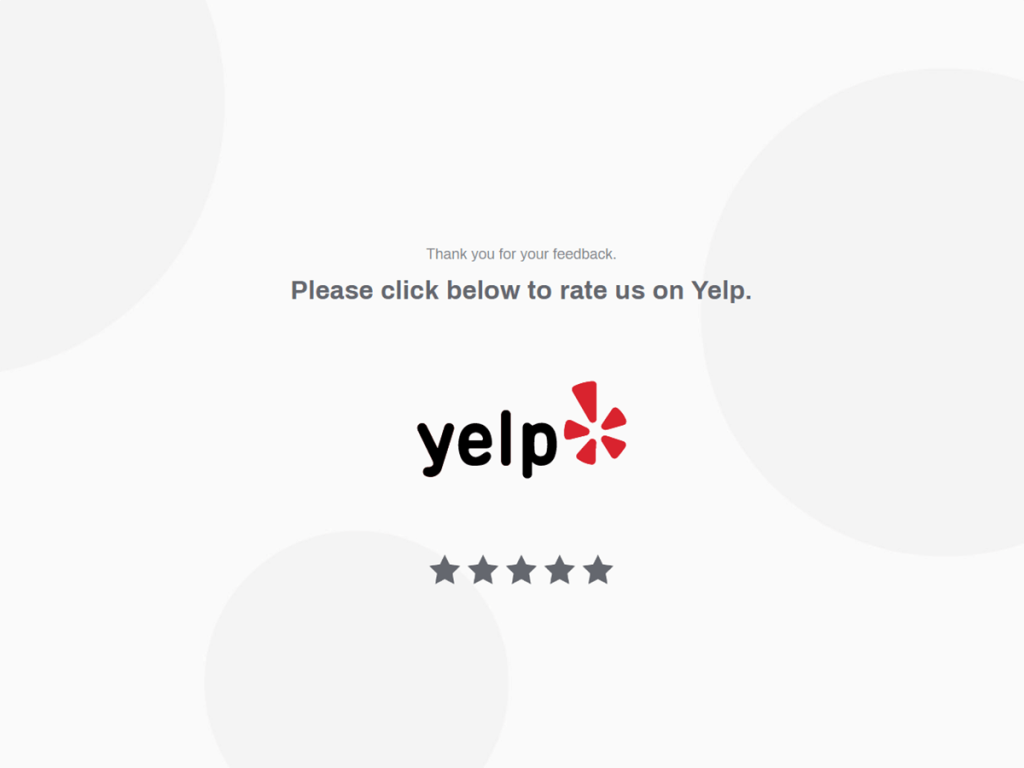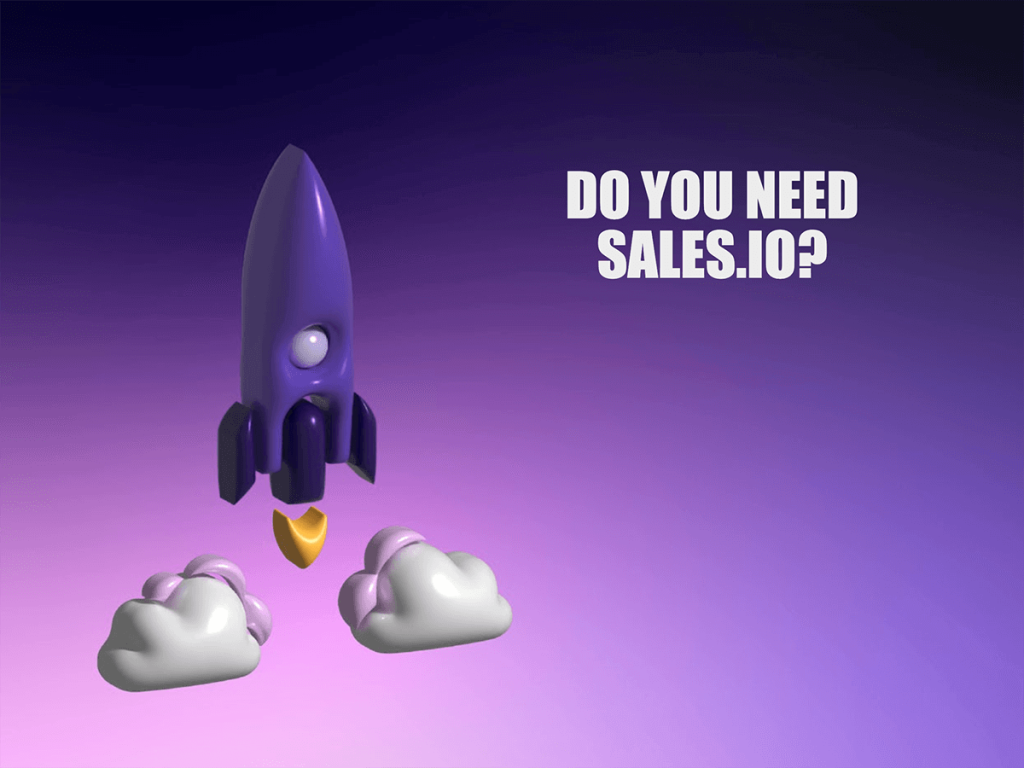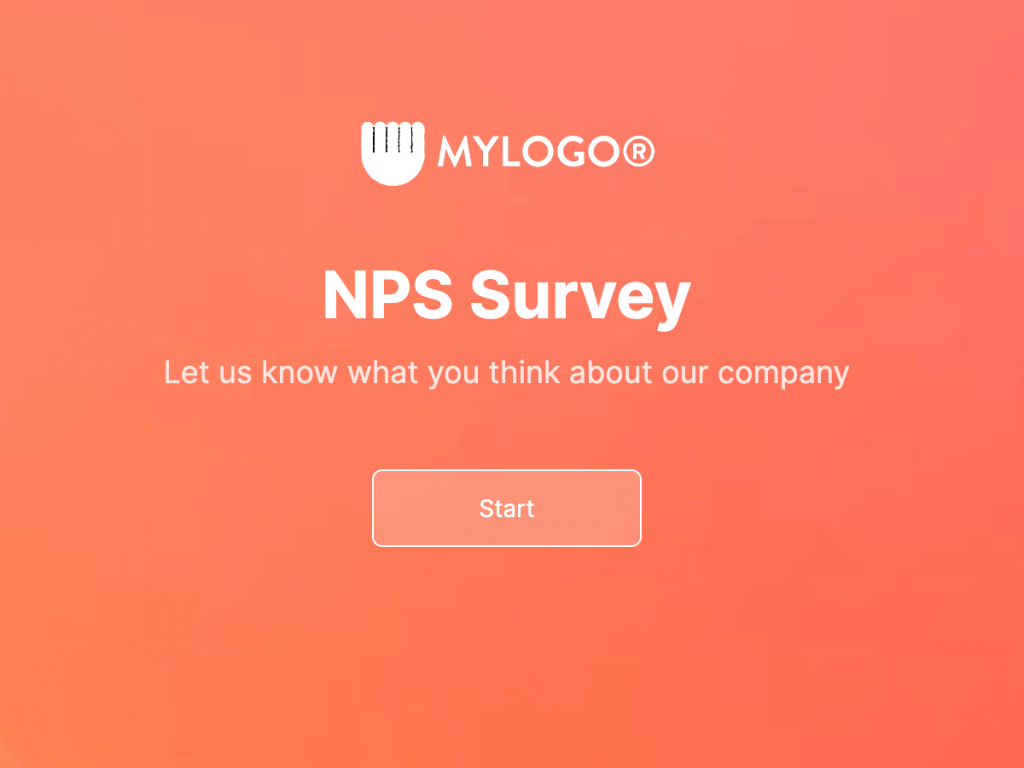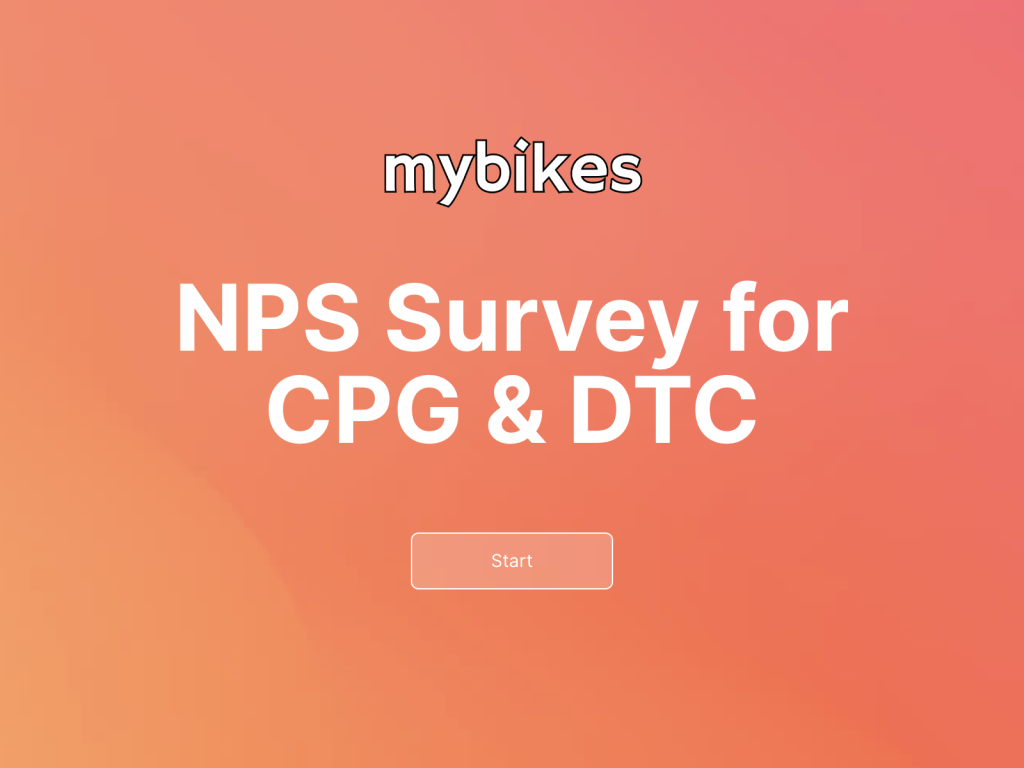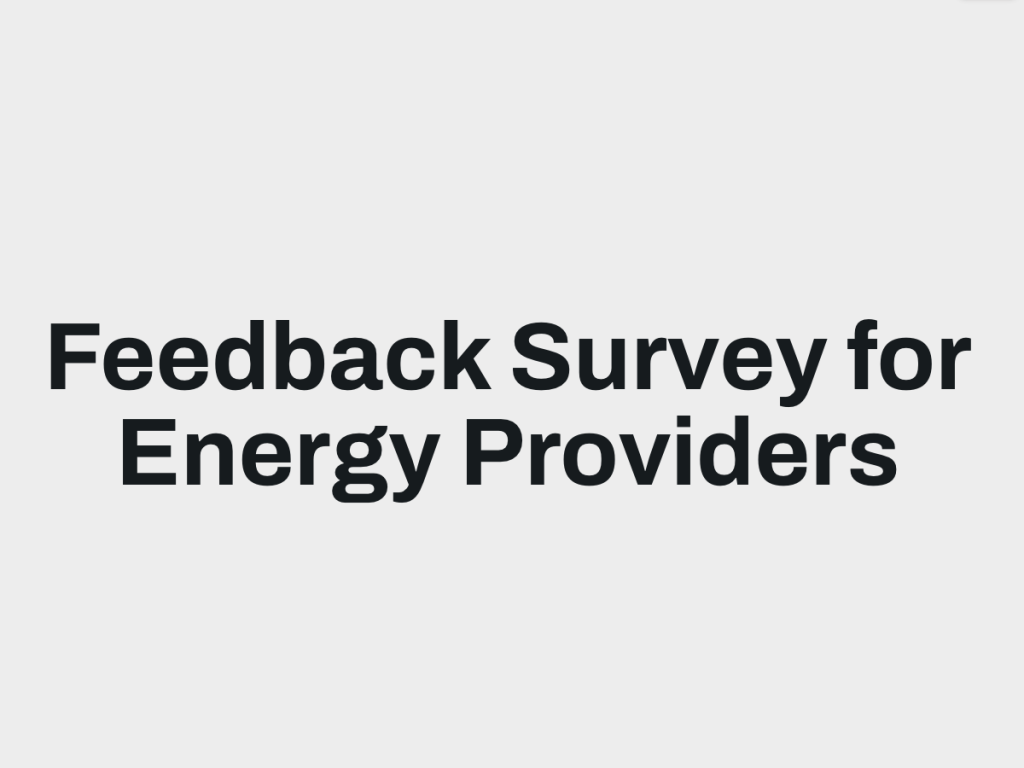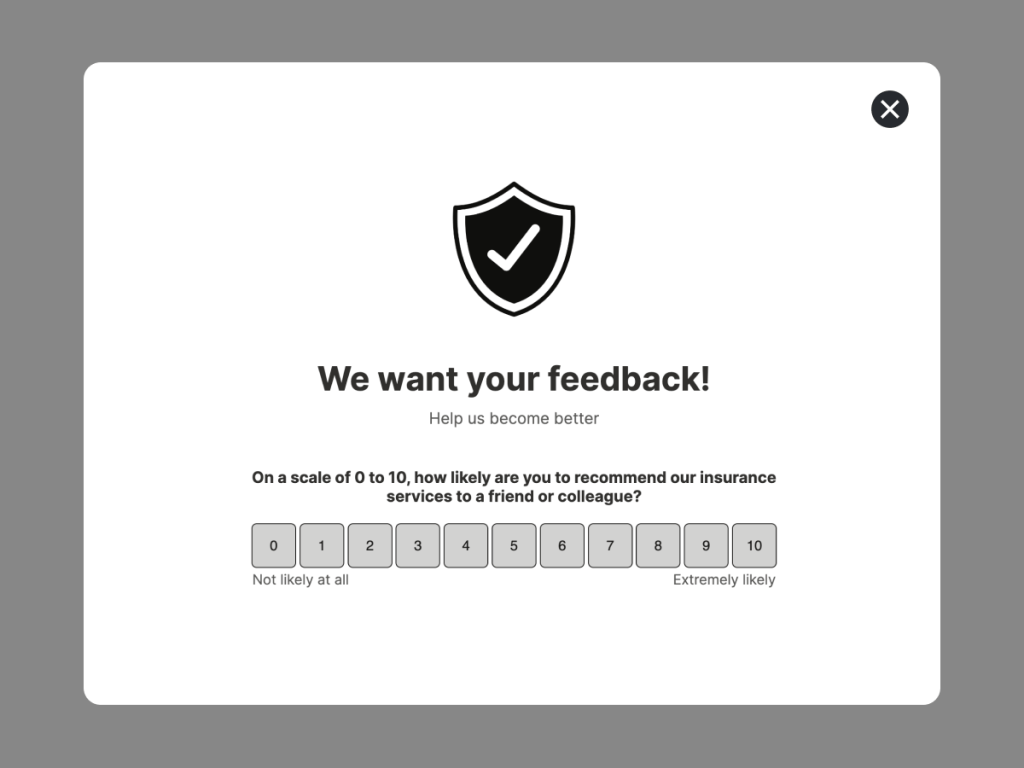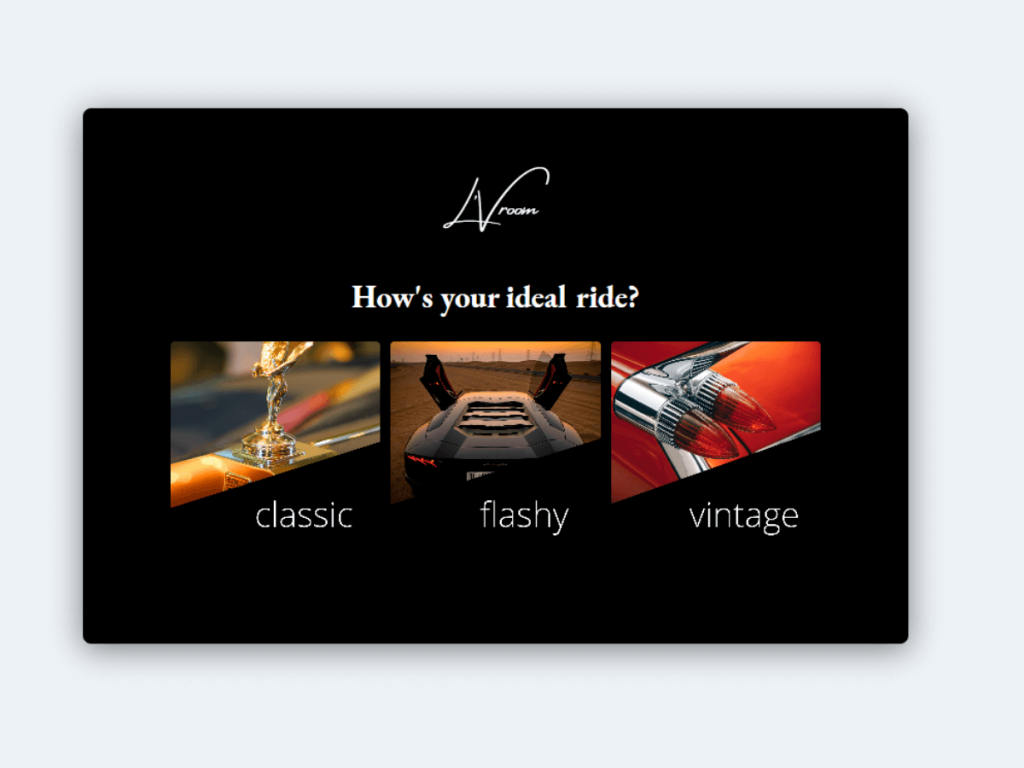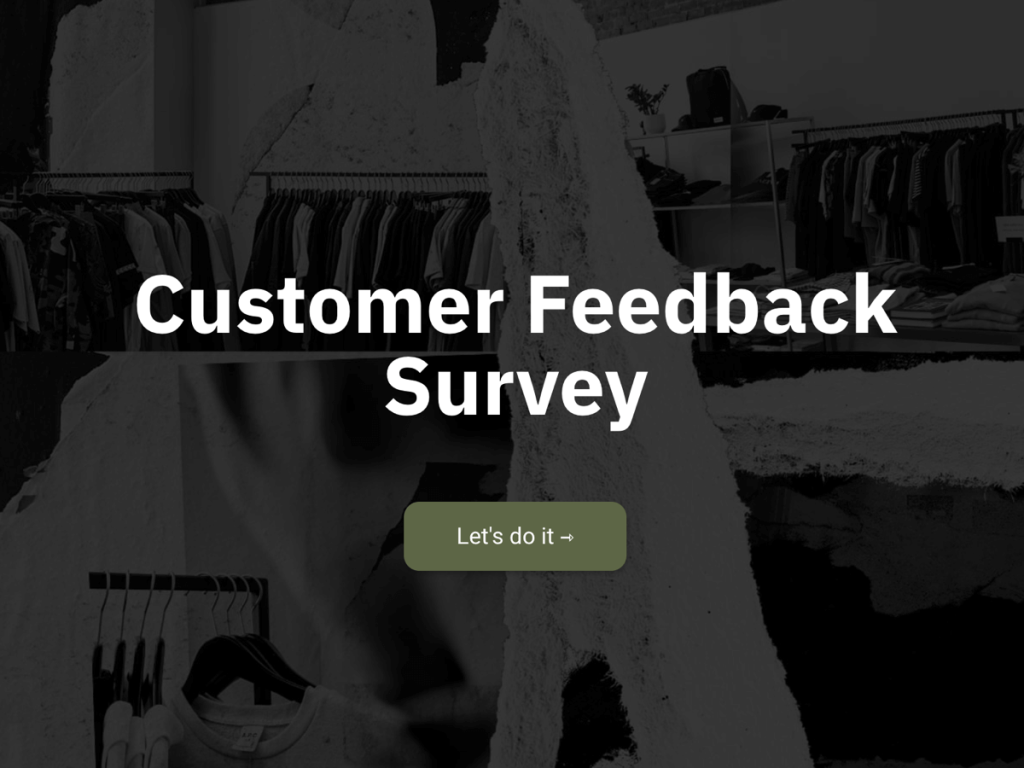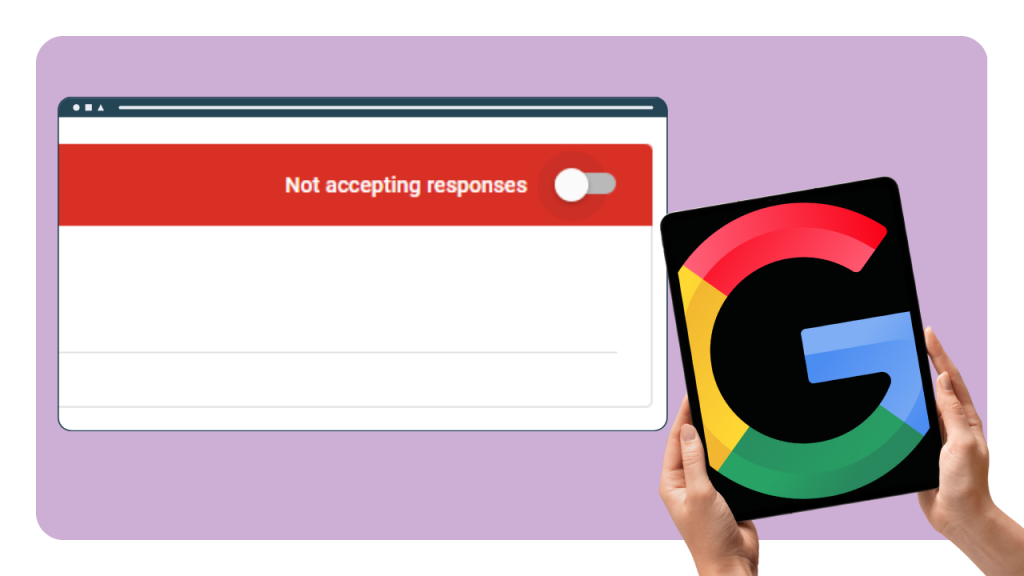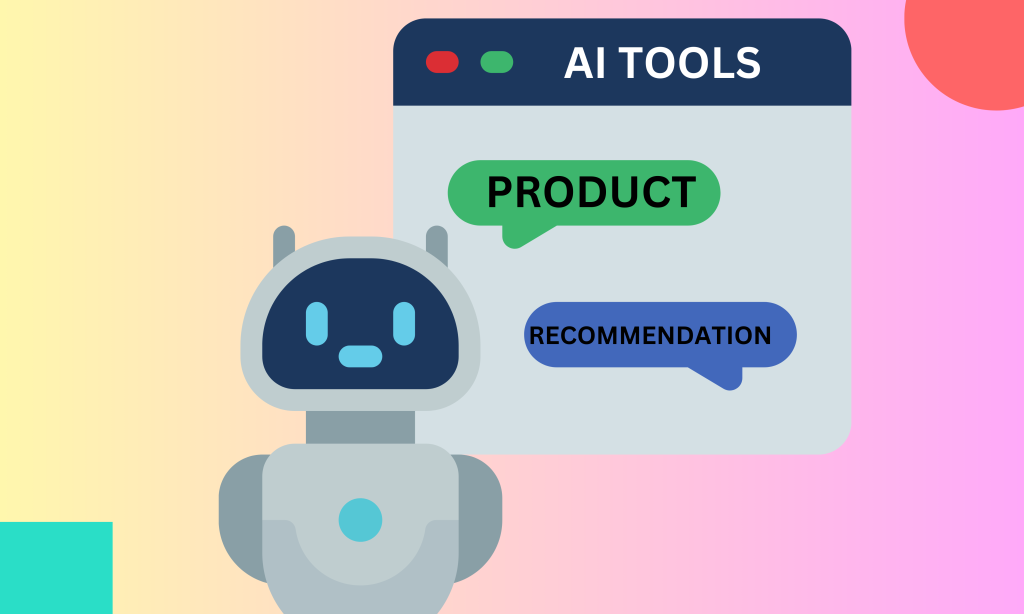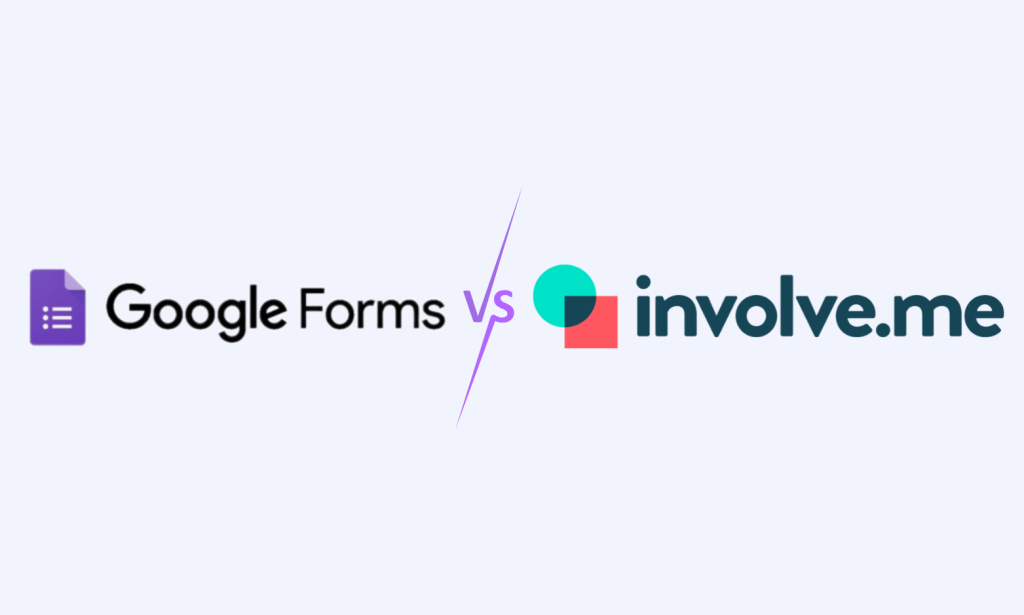Every time a person decides to make a purchase, whether it's a simple grocery item or a major investment, they go through a series of conscious and subconscious steps. This structured path, known as the consumer decision-making process, is important for marketers and brands to understand if they want to influence buyer behavior and improve conversion rates.
Let’s dive into how this process works and what it means for your marketing strategy.
What This Article Covers
The definition and purpose of the consumer decision-making process
Why understanding this process is essential for marketers and brand strategists
A breakdown of the 5 key stages every consumer goes through
The psychological and behavioral factors that drive decisions
How to use this model to improve your customer journey mapping and content strategy
The tools and techniques that support each stage
FAQs to clarify common questions about consumer behavior
What Is the Consumer Decision-Making Process?
The consumer decision-making process is a step-by-step journey people follow when making a purchase. It includes emotional and rational stages, from the initial problem recognition stage to the final post-purchase behavior evaluation.
The purpose of this model is twofold:
For consumers: It helps make informed choices by guiding their information search behavior, comparing options, and reflecting on satisfaction.
For businesses: It provides a structured framework, also known as the consumer decision making process model to influence buyers at critical moments and design seamless customer experiences.
Ultimately, this consumer behavior model reveals the motivations and needs behind actions and helps brands guide potential buyers toward conversions more effectively.
Why It Matters for Marketers and Brands
The consumer decision process influences buyer decisions at the right time with the right content. When marketers understand which stage a customer is in, they can personalize communication and boost results across the customer purchase process.
Key reasons it matters:
It helps create more relevant, stage-based messaging.
It aligns marketing with actual psychological factors in decision-making.
It increases conversions by matching offers to intent.
It improves retention by shaping a strong post-purchase experience.
It provides insights for building a customer journey map.
Brands that ignore this process often push generic campaigns, missing the emotional and informational triggers that actually drive action.
Decision Process Vs. Buyer Funnel: Key Differences
Though the consumer decision making process and the buyer funnel are often confused, they offer two distinct but complementary perspectives:
Aspect | Consumer Decision-Making Process | Buyer Funnel |
|---|---|---|
Focus | Consumer mindset and behavior | Business-led sales journey |
Perspective | Buyer-centric | Brand-centric |
Nature | Psychological and emotional | Structural and tactical |
Stages | Problem recognition → Post-purchase evaluation | Awareness → Consideration → Decision |
Use Case | Understanding why customers act | Structuring how businesses guide buyers |
In short, the 5 stages of the consumer decision-making process are what the buyer experiences, while the funnel is what the business uses to manage that journey. Brands that align both build better trust, reduce friction, and turn leads into advocates.
The 5 Key Stages of the Consumer Decision-Making Process
Understanding each stage of the consumer decision-making process allows marketers to align their messaging, offers, and experiences with what buyers actually need and feel. Below, we explore the 5 stages of decision making, supported by real-life examples and practical strategies.
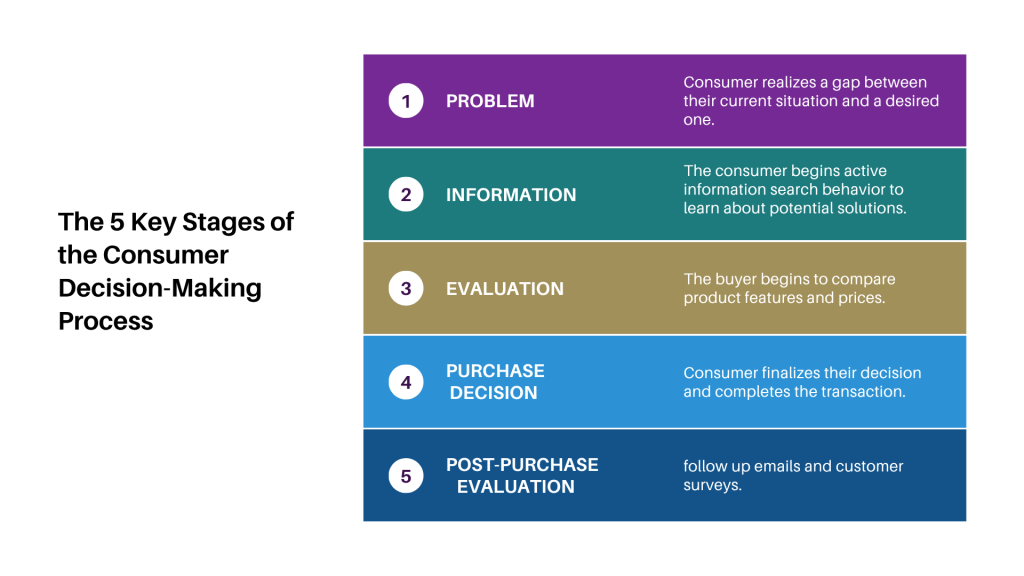
1. Problem or Need Recognition
The first stage in the consumer behavior model begins when a consumer realizes a gap between their current situation and a desired one, this is the problem recognition stage.
Internal Vs. External Triggers
Internal triggers might be hunger, boredom, or a broken product.
External triggers include ads, social influence, or new trends.
Role of Emotion, Lifestyle, Urgency
Emotion, urgency, and lifestyle play a powerful role. A parent noticing their child outgrowing shoes will respond differently than someone casually browsing new arrivals.
Real-Life Example
A person sees a friend post photos from a beach vacation. Suddenly, their old luggage seems outdated. This emotional and lifestyle-driven trigger pushes them into problem recognition: "I need a new suitcase."
2. Information Search
At this stage, the consumer begins active information search behavior to learn more about potential solutions.
Online Research, WOM, Brand Touchpoints
Online research via search engines, YouTube, and forums
Word-of-mouth (WOM) from friends or influencers
Touchpoints like ads, websites, and product demos
Importance of SEO and Social Proof
This is where SEO matters. A well-ranked blog post or product page can drive traffic right when intent is high. Social proof like reviews or testimonials also builds trust.
Real-Life Example
Someone searching for "best carry-on suitcase for airlines" reads blog comparisons, watches YouTube reviews, and checks star ratings. The right mix of SEO content and user reviews helps guide the decision.
3. Evaluation of Alternatives
Now, the buyer begins to compare product features and prices, evaluating which option offers the best value.
Comparison Criteria: Price, Features, Reputation, Value
Common filters include:
Price and affordability
Features and specs
Brand reputation
Perceived value and support
Tools Like Empathy Maps or Comparison Tables
Marketers can use empathy maps, competitor charts, or customer journey map tools to understand and support this decision phase.
Real-Life Example
A user creates a comparison table between Samsonite, Away, and Delsey luggage. They evaluate alternatives based on price, warranty, weight, and durability narrowing down to two choices.
4. Purchase Decision
The moment of truth. At this stage, the consumer finalizes their decision and completes the transaction if everything feels right.
Checkout UX, Trust Signals, Decision Triggers
Seamless checkout experience
Secure payment methods
Clear return policies
Scarcity or urgency as purchase decision triggers
Cart Abandonment Risks
Any friction like hidden fees or slow loading can cause abandonment, even after all that research.
Real-Life Example
A customer selects a suitcase, adds it to their cart, but hesitates. Then they see a limited-time discount pop-up with free returns, this influencing buyer decision convinces them to check out.
5. Post-Purchase Evaluation
After purchase, the post-purchase experience becomes critical in determining if the consumer becomes loyal, or churns.
Feedback Loops, Loyalty-Building
Follow-up emails requesting reviews
Loyalty points or exclusive offers
Customer surveys to improve CX
Influence of Product Satisfaction and CX
The overall post-purchase behavior evaluation is shaped by whether the product met expectations, delivery speed, packaging, and customer support.
Real-Life Example
After receiving the suitcase, the buyer finds a handwritten thank-you note and discount code for a future purchase. They leave a positive review and subscribe to the newsletter, starting a potential loyalty loop.
Psychological and Behavioral Factors That Influence Each Stage
The consumer decision-making process is deeply rooted in human psychology. While the steps may seem rational on the surface, each stage is influenced by a mix of attitudes, beliefs, motivations, and emotional triggers. Understanding these factors helps marketers align their messaging with how people actually think and behave.
Attitudes, Beliefs, and Motivations
Every buying decision begins with a mindset shaped by personal values, past experiences, and cultural influences. A customer’s attitude toward a brand, belief in a product’s quality, or motivation to solve a problem quickly can accelerate or delay their movement through the consumer decision process.
A positive attitude can reduce friction in the problem recognition stage
Strong motivation can shorten the information search behavior
Pre-existing beliefs may impact how people evaluate alternatives
These internal factors affect how people interpret brand messages and compare choices, ultimately influencing buyer decisions.
Influence of Branding and Positioning
Strategic branding plays a massive role throughout the 5 stages of the consumer decision-making process. A well-positioned brand communicates clarity, consistency, and trust, which simplifies decision-making.
During information search, strong branding increases click-throughs and retention.
In the purchase decision phase, recognizable logos, consistent messaging, and positive associations act as powerful purchase decision triggers.
After the sale, your brand promise influences post-purchase behavior evaluation and long-term loyalty.
Importance of Emotional Connection
The most successful brands don’t just sell products, they create emotional bonds. A compelling emotional connection reduces decision anxiety and strengthens customer loyalty during the post-purchase experience.
Emotion is often what shifts someone from consideration to conversion.
A human-centric message or relatable story can outperform logic and data.
Emotional branding supports the full customer purchase process, from awareness to advocacy.
To build emotional resonance, speak directly to your audience’s aspirations, pain points, and values.
How to Use This Model to Improve Your Marketing Strategy
Learning about consumer decision-making process models is only half the battle, the real value lies in using it to guide your strategy. Here’s how to apply this framework to boost engagement, conversions, and loyalty.
Customer Journey Mapping
A customer journey map visually outlines how users move through each decision-making stage. It helps identify friction points, emotional triggers, and opportunities to improve their experience.
Map each of the 5 stages of decision making with associated thoughts, feelings, and actions.
Identify touchpoints where marketing can influence behavior.
Pinpoint where customers drop off and optimize those moments.
This gives you a clear view of where to focus your efforts and improve the overall consumer behavior model.
Persona Development
Creating detailed personas helps you personalize strategies across the funnel. When personas include emotional drivers, pain points, and information preferences, you’re better equipped to meet customers where they are.
Include demographic, psychographic, and behavioral data.
Define motivations at each decision stage, especially the problem recognition stage and evaluation of alternatives.
Match each persona with targeted solutions and messaging.
This keeps your marketing relevant and aligned with real-world behaviors.
Targeted Content Across the Funnel
Each stage of the decision process requires tailored content:
Top of funnel: Blog posts, educational videos, SEO content for information search behavior
Middle of funnel: Product comparisons, reviews, compare product features and prices
Bottom of funnel: Case studies, limited-time offers, guarantees to trigger action
Consistently relevant content supports influencing buyer decisions at each touchpoint, guiding them smoothly through the buyer journey.
Tools to Support Each Stage
To successfully guide customers through the 5 stages of the consumer decision-making process, marketers need the right tools to collect data, personalize messaging, and optimize engagement. From the problem recognition stage to post-purchase behavior evaluation, the right stack empowers brands to influence and support buyers at every step of the consumer purchase process.
CRM, Surveys
Customer relationship management systems and survey tools help capture and organize user data across all stages of the consumer decision-making process model.
But while traditional survey tools like Typeform collect data passively, involve.me takes a dynamic, conversion-focused approach.
Why involve.me Stands Out:
Personalized Lead Funnels: Unlike static forms, involve.me lets you build multi-step experiences tailored to the user's needs and behaviors, perfect for information search behavior and problem recognition stages.
Conditional Flows: Guide users through personalized paths based on their answers, effectively helping them evaluate alternatives in real time.
Real-Time Data Collection: Track answers, drop-offs, and engagement levels to continuously optimize the funnel.
Post-Purchase Feedback Forms: Use branded surveys and follow-up quizzes to enhance the post-purchase experience and collect data for future improvements.
Whether you’re running a product recommender, pricing calculator, lead capture form, or feedback survey, involve.me can be embedded into your site or landing pages without coding, making it easy to integrate across the customer journey map.
Create your own online surveys
Get started with 300+ templates
Yelp Review Funnel Template
Sales Qualified Lead Score Calculator Template
Opinion Scale Survey 5 Template
Opinion Scale Survey for CPG & DTC Template
Feedback Survey for Energy Providers Template
Opinion Scale Survey for Insurance Template
A/B Testing and Personalization Tools
During the evaluation of alternatives and purchase decision stages, A/B testing plays a crucial role in influencing buyer decisions. Whether you’re testing landing page headlines, form layouts, or CTAs, these experiments reveal what resonates most with your audience.
Recommended tools:
Google Optimize (sunset, but still used by some)
VWO, Optimizely
involve.me A/B Testing: For form-level optimization based on conversion rates and user paths
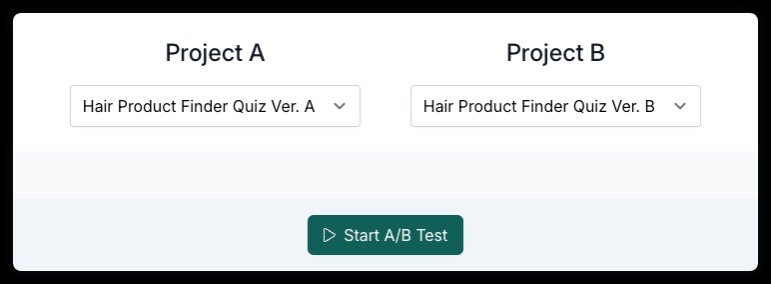

Marketing Automation and Segmentation
To move prospects through the 5 stages of decision making, automation is essential. It allows you to segment users based on behaviors and trigger actions based on events, like abandoned carts or completed forms.
Recommended tool:
With involve.me integrations, you can sync lead data with your CRM, segment based on form responses, and trigger email workflows through connected platforms like Mailchimp or Zapier.

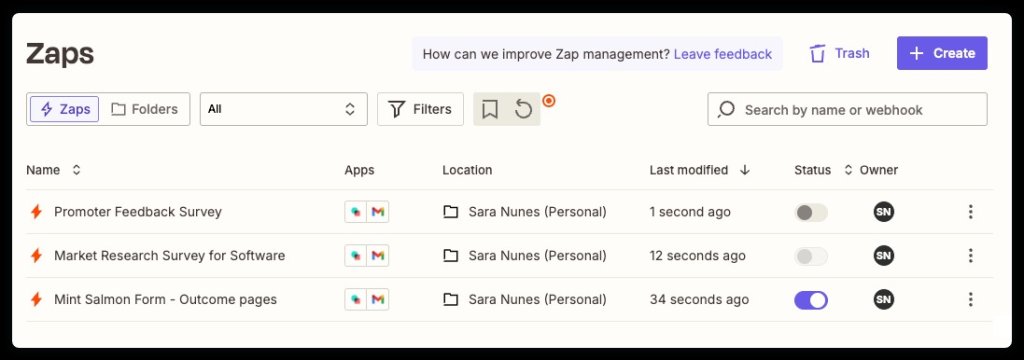
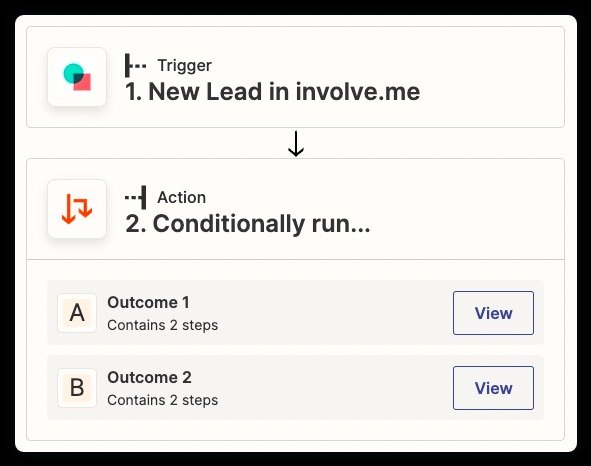
This means a user who showed interest in a product comparison quiz can automatically receive a personalized follow-up email, improving engagement and trust throughout the consumer decision-making process.
Final Thoughts
Every buying decision is a journey. From discovering a need to reflecting on the purchase, customers experience an emotional and rational path shaped by brand perception, trust, and experience. By mapping out the consumer decision-making process and supporting each stage with the right tools, brands can turn passive browsers into active buyers and buyers into loyal advocates.
However, never treat the journey as done after checkout. Use platforms like involve.me to collect reviews, survey feedback, and NPS scores to understand what worked and what didn’t. This kind of post-purchase behavior evaluation drives product improvement and customer satisfaction.
When you align tools, content, and strategy with the consumer behavior model, you not only improve conversions, you build relationships. The better you support your customers throughout the customer journey map, the more likely they are to return, refer others, and stay loyal.

